30th anniversary - UNESCO’s Memory of the World
By Queensland Memory, State Library of Queensland | 24 October 2022
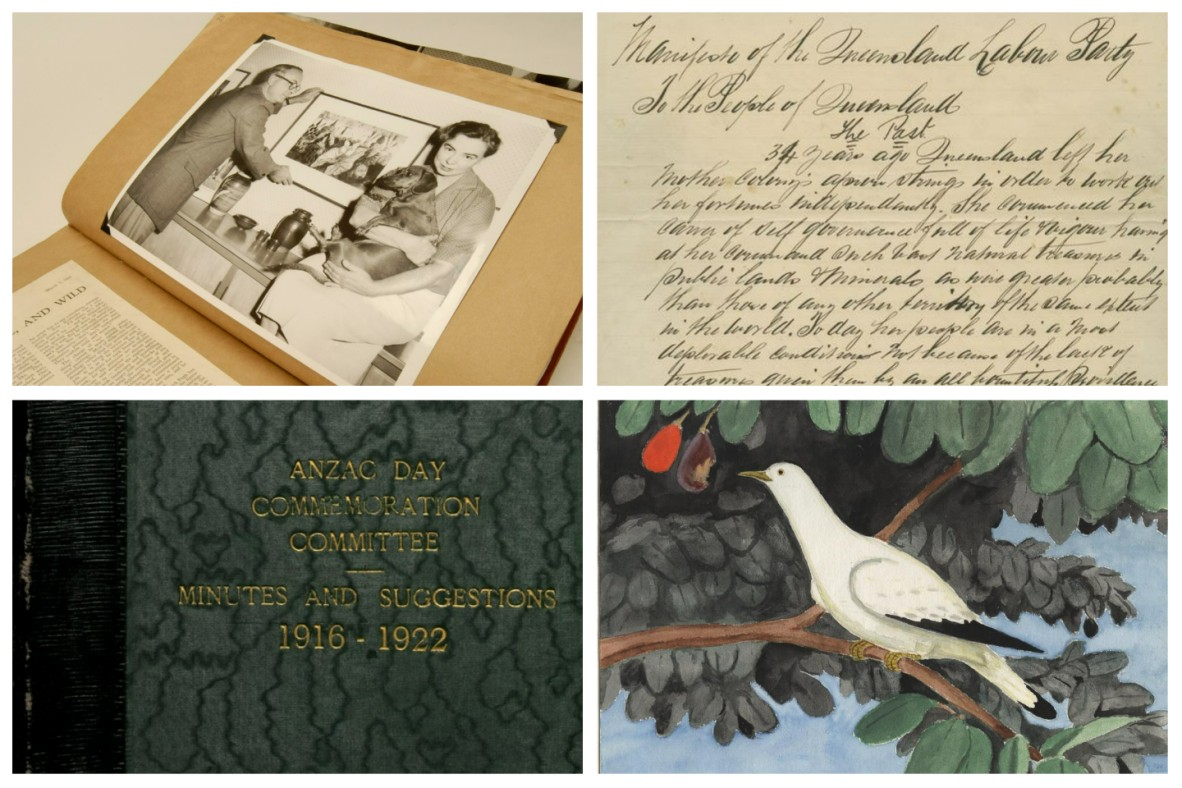
UNESCO’s Memory of the World program, begun in 1992, aims to preserve and promote humanity’s documentary heritage by creating a shared record that reflects the diversity of languages, people and cultures around the world.
UNESCO, as the international agency responsible for the protection of the world’s natural and cultural heritage, recognised the need to protect such fragile yet significant cultural heritage as that contained within items such as documents, oral traditions, audio-visual material and library and archive holdings.
The Australian Memory of the World Register (AMWR) is run by a local committee, within the regional framework of the Memory of the World Committee for the Asia Pacific. It includes some of our country’s most significant, fascinating and confronting archival collections, currently standing at 78 items.
Since 2008, several of State Library of Queensland collections have been added to the Australian Memory of the World Register.
Margaret Lawrie Collection of Torres Strait Islander Material 1964-1988
Added to the Australian Memory of the World Register in 2008, this collection represents the life’s work of Margaret Lawrie, a teacher with a strong interest in child health, who travelled to the Torres Strait with Aboriginal poet Oodgeroo Noonuccal (Kath Walker). It was here that Margaret became interested in the history, culture and languages of the Torres Strait people.
Margaret amassed a wealth of resources during her many stays in the Torres Strait, due to the strength of the relationships she developed over decades, and led to her collecting transcripts, audio recordings, photographs, slides, works of art and oral stories which culminated in two publications: Myths and Legends of Torres Strait (1970) and Tales from Torres Strait (1972).
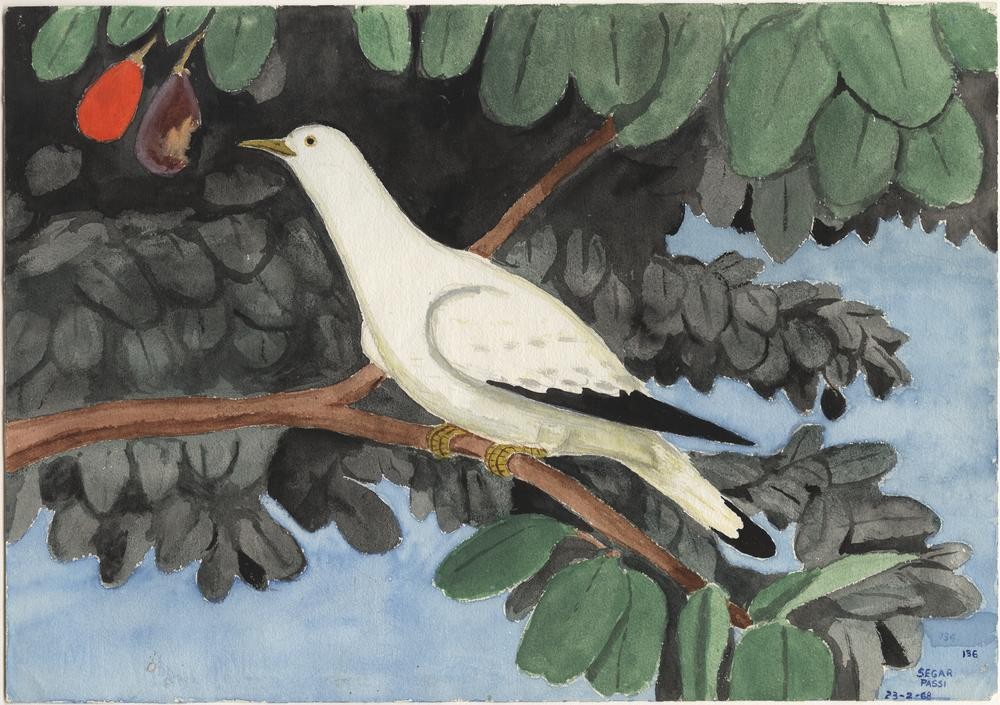
Birds of Murray Island. Number 136. "Torres Strait pigeon eating the fruit of the wild plum". Segar Passi, 1968. TR 1791 Margaret Lawrie Collection of Torres Strait Islands Material 1964-1998. John Oxley Library, State Library of Queensland
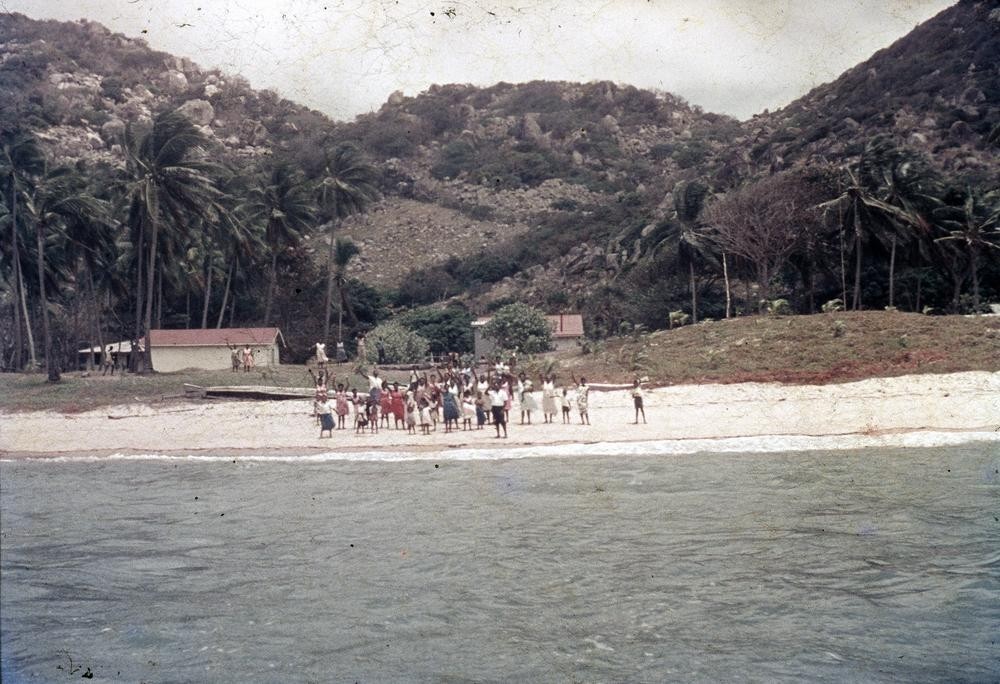
View of a beach on Dauan Island, Queensland 1968. TR 1791, Margaret Lawrie Collection of Torres Strait Islands Material, John Oxley Library, State Library of Queensland. Image TR1791-0173-0021
A particular strength of the Margaret Lawrie collection is the many genealogies she documented of families living across the 17 communities of the Torres Strait. These are still used in family history research and Native Title claims.
The collection was donated to State Library of Queensland in 1996 and most of it has been digitised.
Learn more about the Margaret Lawrie collection on our blog.
Manifesto of the Queensland Labour Party 1892
The Manifesto of the Queensland Labour Party, dated 9 September 1892 and one of the foundational documents of present-day Australian Labor Party, was written at a time of great social and political upheaval as the Labor movement looked for alternatives to industrial action to progress its aims.
Born of workers demanding access to better conditions and pay, the Manifesto laid out the workers’ grievances with a particular focus on the most powerful people at the time: squatters, employers, the government and others. The Manifesto also called for electoral and land reforms as well as social equality.
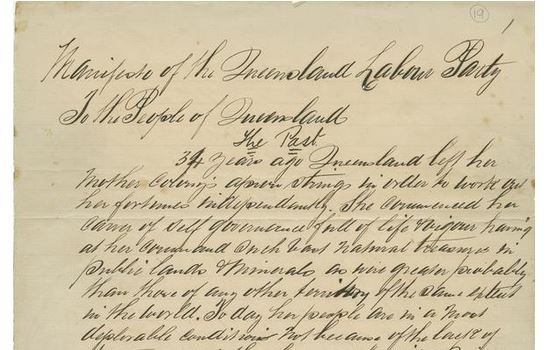
Manifesto of the Queensland Labor Party, 9 Sep 1892. OM69-18/16 - Papers of Charles Seymour. John Oxley Library, State Library of Queensland
Written by Charles Seymour and signed by Thomas Glassey, also the first person to be elected to public office from a Labor party platform, the Manifesto came to State Library as part of the Charles Seymour Papers (1880-1924) collection. It is now one of the Library’s ‘treasure collections’.
This collection item was added to the Australian Memory of the World Register in 2008.
Learn more about the Manifesto of the Queensland Labour Party on our blog.
Johnstone Gallery Archive 1948–c.1992 and Arthur Davenport Photographs 1955–1992
The Johnstone Gallery was a commercial art gallery that operated in Brisbane from 1950 to 1972 during a seminal time in the development of an audience for contemporary art in Australia. It brokered strong sales year after year for Australian artists of the period, including Charles Blackman, Sidney Nolan, Donald Friend, Arthur Boyd, Ray Crooke, Margaret Olley, Lawrence Daws, Robert Dickerson and others.
The Johnstone Gallery was a focal point of artistic and social life in Brisbane and when it eventually closed in 1972, there was a very real sense that this was the end of an era. The final exhibition was of sculpture by Leonard and Kathleen Shillam.
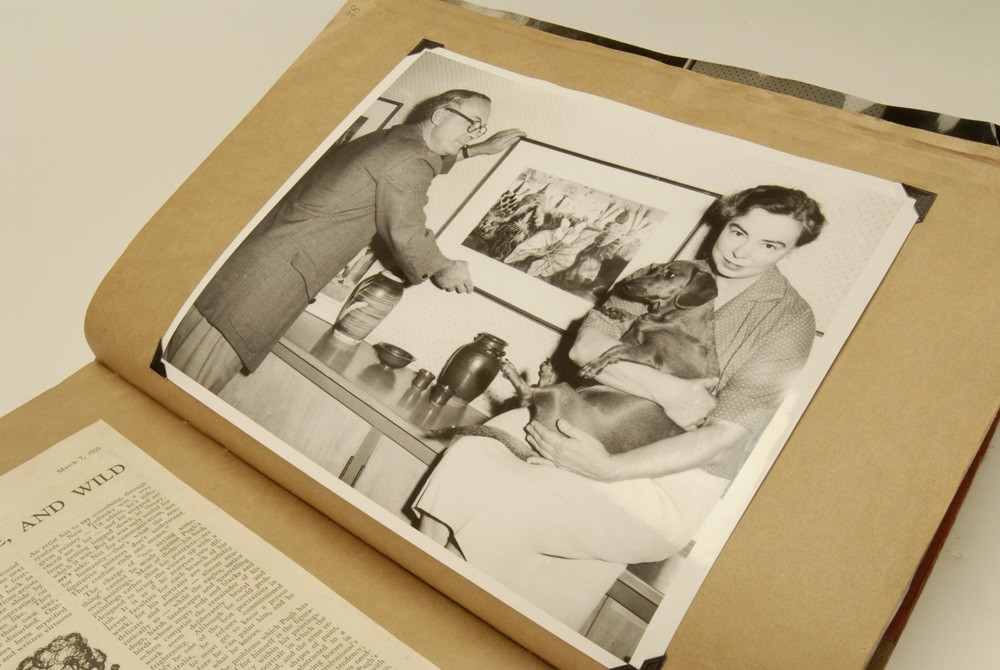
Brian and Marjorie Johnstone with their dog Lindy, photographed by Arthur Davenport and added to the scrapbook. The collection includes 26 volumes of bound scrapbooks. RBHARC-7 Johnstone Gallery Archive 1948-ca. 1992. John Oxley Library, State Library of Queensland
In 1994 Marjorie Johnstone bequeathed the Johnstone Gallery Archive to the Australian Library of Art, State Library of Queensland. It’s supported by the photographic collection of Arthur Davenport who documented artworks and installations at the Johnstone Gallery from 1964 until 1972.
In 2021, the Johnstone Gallery Archives was added to the Australian Memory of the World Register.
Learn more about the Johnstone Gallery Archive on our blog.
Anzac Day Commemoration Committee Minutes and Suggestions 1916-1922
State Library of Queensland holds the records of Queensland's Anzac Day Commemoration Committee, established at a public meeting in the Exhibition Building in Brisbane on 10 January 1916, in order to explore options for the commemoration of the fallen soldiers of the Gallipoli campaign. The first minute book of the Anzac Day Commemoration Committee, held in the John Oxley Library, is a precious piece of our state's wartime history, and suggests that Queensland was the first state to develop a formal structure for observing Anzac Day, and to settle on a date with the hope that others would follow.
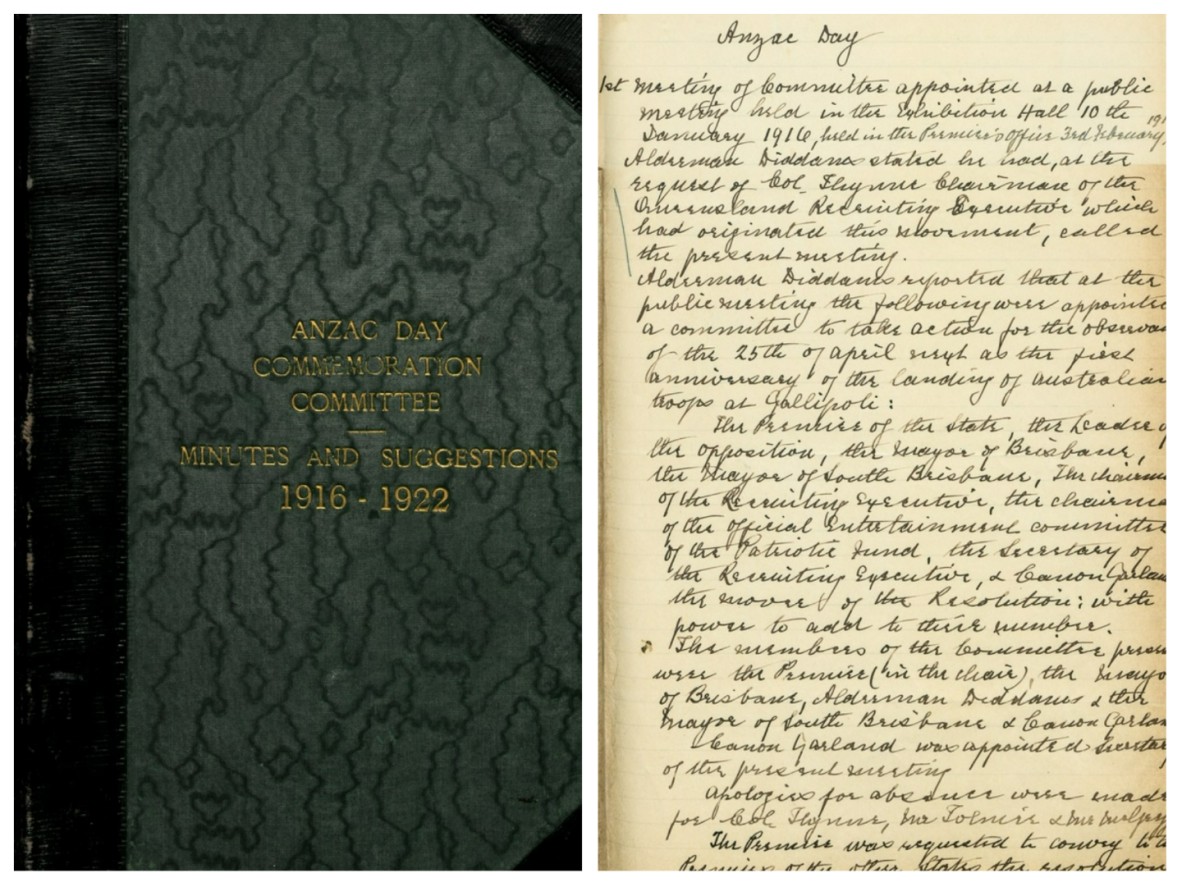
First minute book of the Anzac Day Commemoration Committee. OMHA ANZAC Day Commemoration Committee Records 1916-1974, John Oxley Library, State Library of Queensland
This collection was added to the Australian Memory of the World Register in 2019.
Learn more about the Anzac Day Commemoration Committee Minutes and Suggestions 1916-1922 on our blog.
Comments
Your email address will not be published.
We welcome relevant, respectful comments.